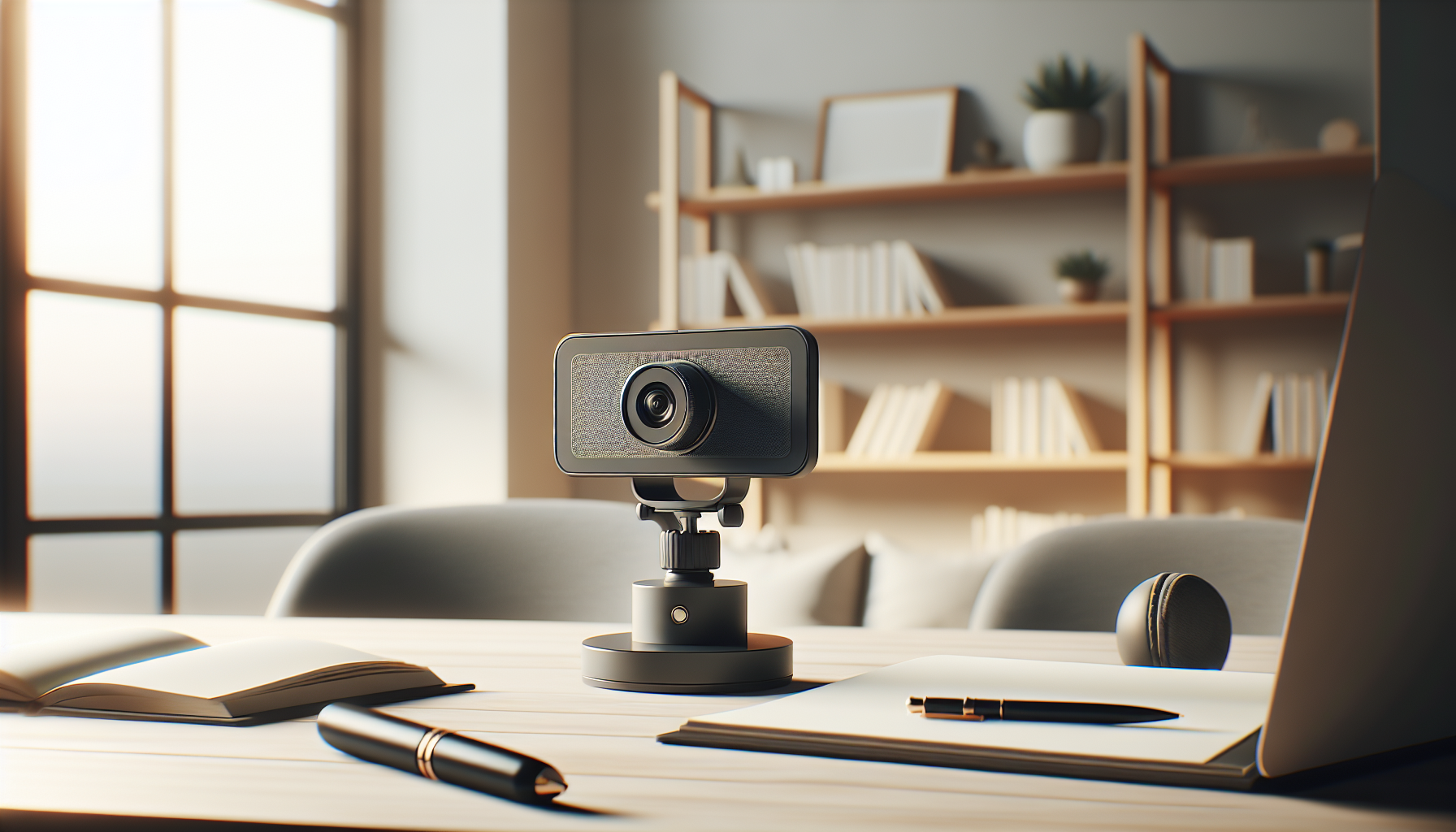It’s a bit of a puzzler, isn’t it? You might be wondering whether a webinar really needs a webcam. After all, some folks feel comfortable just hiding behind their screens. That’s totally valid—no judgment here!
But stick with me, and I promise I’ll help you figure this out. We’ll explore the perks of using a webcam, when you might be able to skip it, and even some creative ways to keep everyone engaged without one.
By the end of our chat, you’ll have a solid grasp of whether a webcam is a must-have for your next webinar. Ready? Let’s dive in!
Key Takeaways
- A webcam is not mandatory for webinars; content can be delivered effectively without it.
- Using a webcam enhances engagement and builds trust with attendees.
- When focused on complex content, skipping the webcam may be more effective.
- Alternative engagement methods without a webcam include polls, chat features, and breakout rooms.
- Ensure a stable internet connection, good lighting, and high-quality audio for optimal webcam use.
- Follow best practices like maintaining a professional background and encouraging interaction throughout the session.

Does a Webinar Require a Webcam?
The short answer is: not necessarily. Webinars can be successful without a webcam, but using one can elevate the experience.
If you’re presenting information, sharing your screen, or displaying slides, you can still do that effectively without showing your face.
However, adding a webcam creates a more personal connection with attendees. It allows your audience to see you, which can build trust and engagement.
Consider your goals and audience preferences. If your aim is to have an interactive session where participants feel involved, a webcam might be a smart move.
Ultimately, it’s about finding the right balance between content and connection.
Benefits of Using a Webcam in Webinars
Using a webcam during webinars comes with several advantages that can enhance the overall experience.
Firstly, participants are more likely to engage when they can see the speaker. It creates a sense of presence; people often respond better when they can connect visually.
Secondly, webcams allow you to convey emotions and reactions, which can be vital when discussing complex topics. A smile can diffuse tension, while nodding can encourage audience participation.
Moreover, incorporating a webcam can make your presentation feel more dynamic. It breaks the monotony of a static screen and keeps viewers interested.
Lastly, a webcam can help establish your brand’s personality. Viewers can associate visual cues with your message, reinforcing your identity as a speaker or organization.
When a Webcam May Not Be Necessary
While webcams have their perks, there are also times when they may not be needed.
If your session focuses heavily on content delivery, such as a lecture filled with complex data or charts, you might choose to omit the webcam.
In these cases, sharing your screen and focusing on visuals can often communicate your message more effectively than appearing on camera.
Additionally, some presenters may feel uncomfortable or anxious about being on film. If this affects your presentation adversely, it may be wise to skip the webcam.
Lastly, webinars aimed at a large audience with passive information consumption, such as webinars featuring pre-recorded material, might not require a webcam.
Alternative Ways to Engage Participants Without a Webcam
Engaging your audience without a webcam is entirely feasible. Here are some effective methods.
Start with interactive polls to gauge opinions or preferences. Tools like Poll Everywhere can seamlessly integrate polls into your presentation.
Next, use breakout rooms for discussions. Small group settings can encourage participation and foster connections, even without visual interaction.
Incorporating chat features is also essential. Encourage participants to ask questions and make comments throughout the session.
Additionally, consider using engaging visuals and animations to keep the audience’s attention. This means crafting slides that not only present data but also tell a story.
Finally, share your screen to demonstrate processes, whether it’s showing software or navigating websites. It’s a practical way to provide value without being on camera.

Technical Aspects of Using a Webcam for Webinars
Using a webcam for webinars involves several technical considerations that can significantly affect your presentation.
First, ensure your internet connection is stable. A wired connection is often more reliable than Wi-Fi, especially for streaming video.
Next, check the resolution of your webcam. A good quality webcam with at least 720p resolution is ideal for clear video output.
Lighting is also crucial; natural light works best, but if that’s not an option, invest in a low-cost ring light or softbox to enhance your visibility.
Test your audio equipment, as sound quality is just as important as video quality. Consider using a good microphone to avoid poor audio that can distract viewers.
Before going live, run a test with a friend or colleague to identify and troubleshoot any potential issues.
Lastly, familiarize yourself with the webinar platform’s settings regarding video, audio, and screen sharing options.
Best Practices for Webcam Use During Webinars
Effective webcam use can make a big difference in the success of your webinar.
Start with your background; ensure it’s clean and professional. An uncluttered space keeps the focus on you.
Position your camera at eye level to create a more natural dialogue with your audience.
Dress professionally, even if you’re at home. Your appearance can impact how attendees perceive you and your content.
Engage with your audience by making eye contact with the camera. This gives attendees a sense of connection.
Use gestures and expressions to enhance your message. This non-verbal communication can help maintain engagement.
Keep your presentations concise and to the point, as long blocks of talking can lead to viewer fatigue.
Finally, encourage questions and interaction throughout your webinar. Consider pausing occasionally for questions to create a two-way conversation.

Conclusion on Webcam Use in Webinars
In conclusion, the decision to use a webcam during webinars boils down to your specific goals and audience needs.
While a webcam can foster connection and enhance engagement, it isn’t a necessity for every presentation.
Consider the style of your content and how comfortable you feel on camera. There are many engaging strategies you can utilize even without visual presence.
At the end of the day, it’s all about creating an effective learning environment for your participants.
Weigh the pros and cons, and make your decision based on what will serve your audience best.
Whether you go for the webcam or not, remember to focus on delivering value and creating an interactive experience.
FAQs
No, a webcam is not required for participation. Attendees can join using audio or text chat, but using a webcam can enhance engagement and interaction during the webinar.
Using a webcam during webinars can improve connection, foster trust, encourage participation, and facilitate non-verbal communication, making the overall experience more engaging and dynamic for participants.
Yes, alternatives include using interactive polls, Q&A sessions, shared presentations, and chat features to engage participants without requiring a webcam, maintaining interaction and interest.
Best practices include ensuring good lighting, positioning the camera at eye level, maintaining eye contact, minimizing distractions in the background, and dressing appropriately to create a professional atmosphere.
